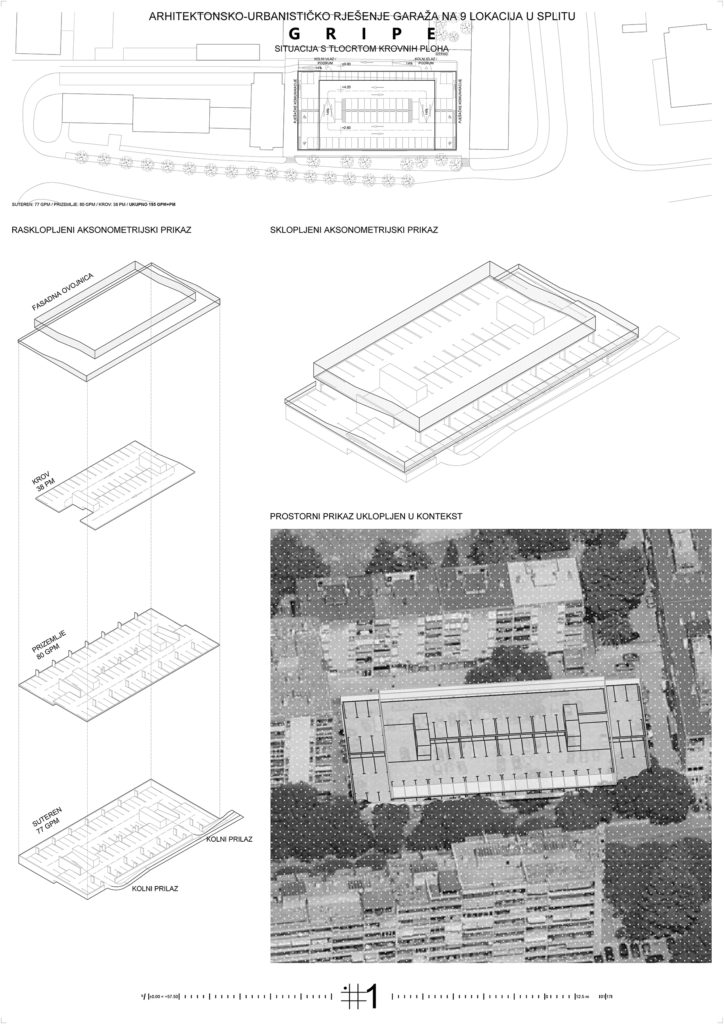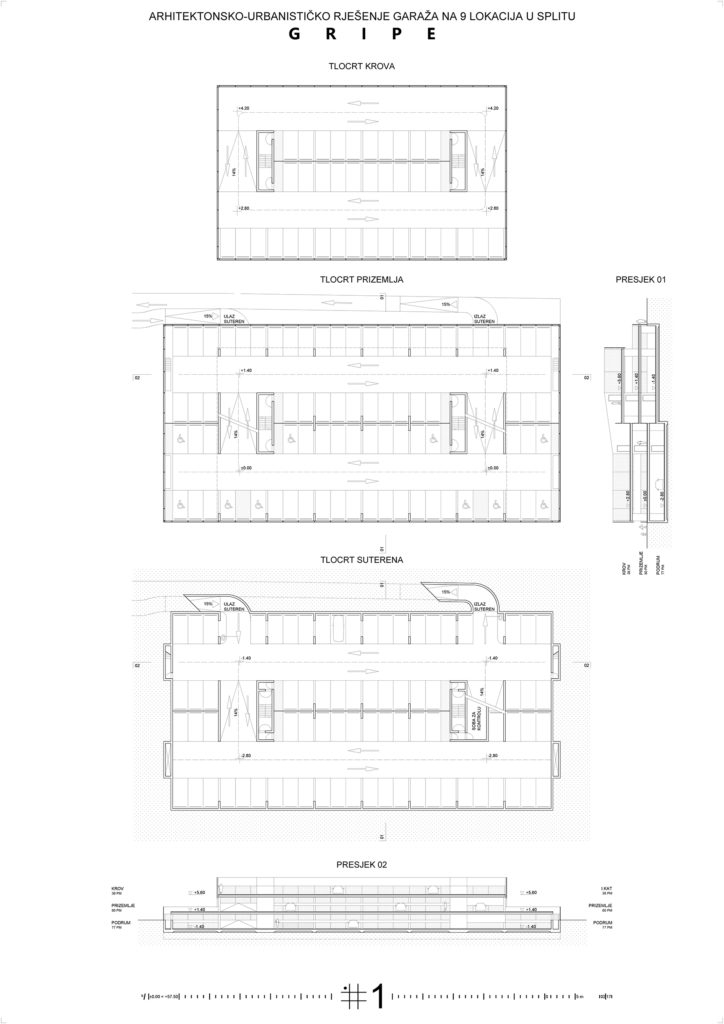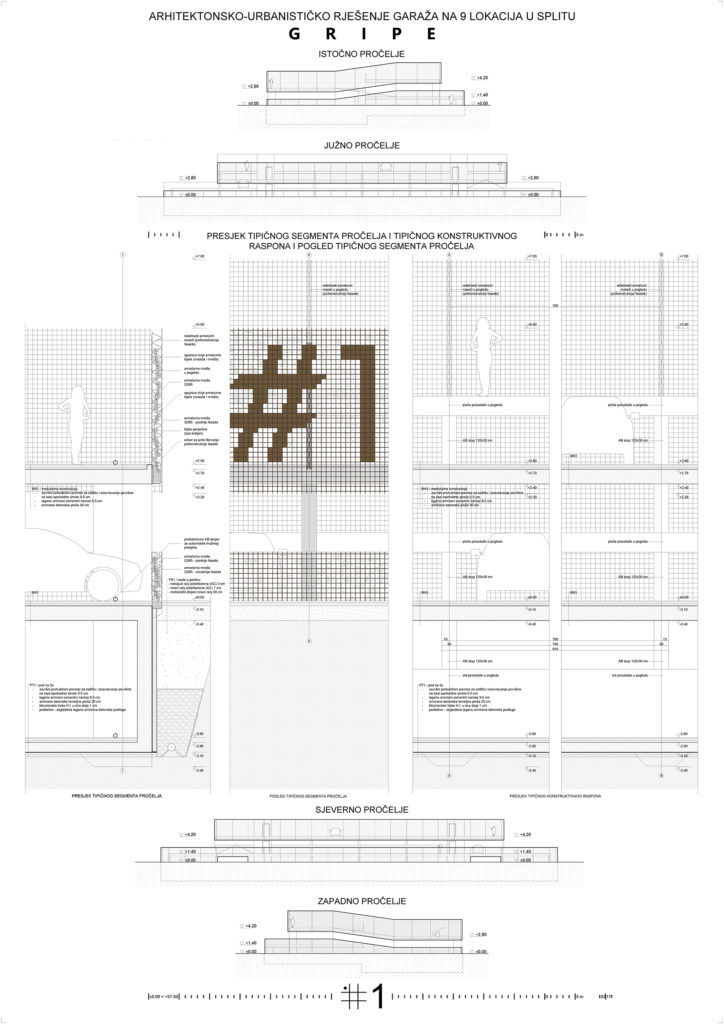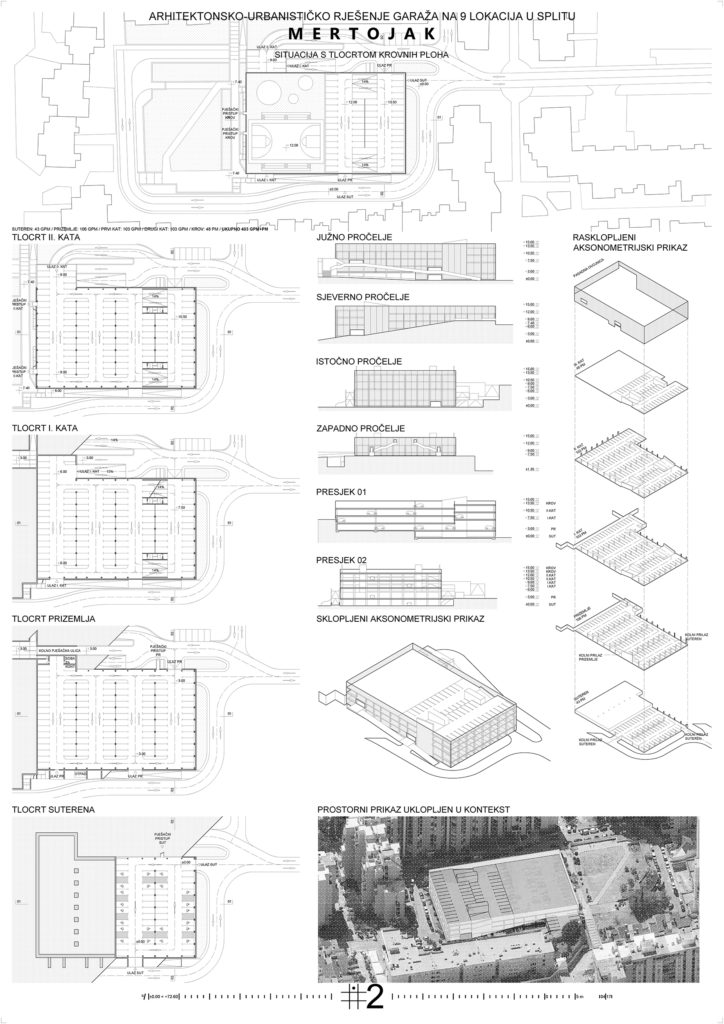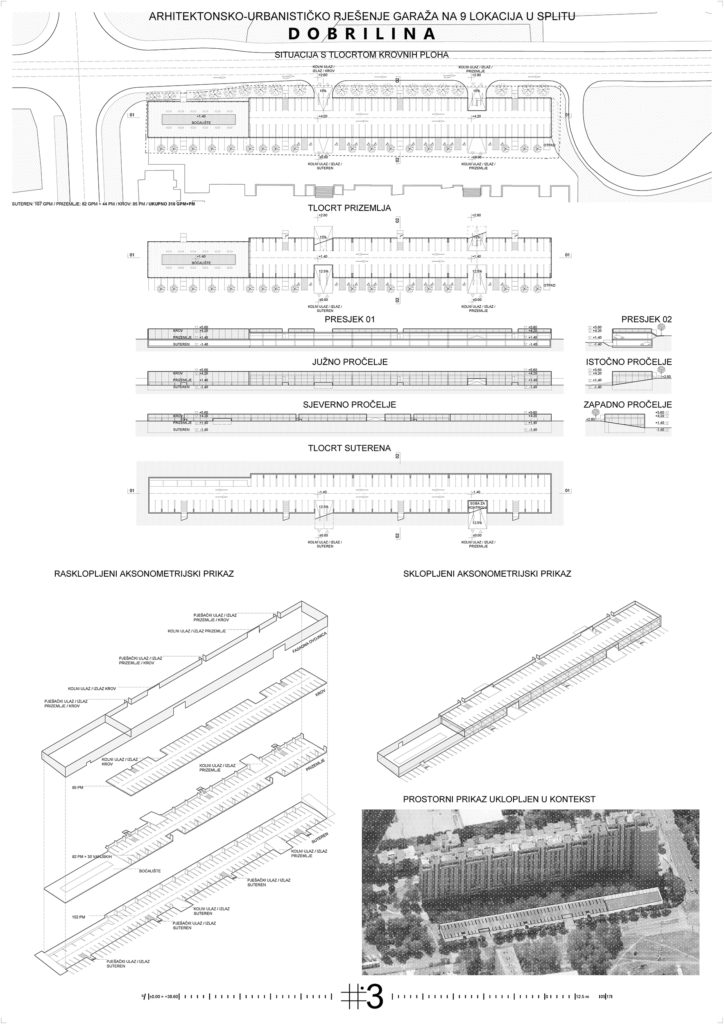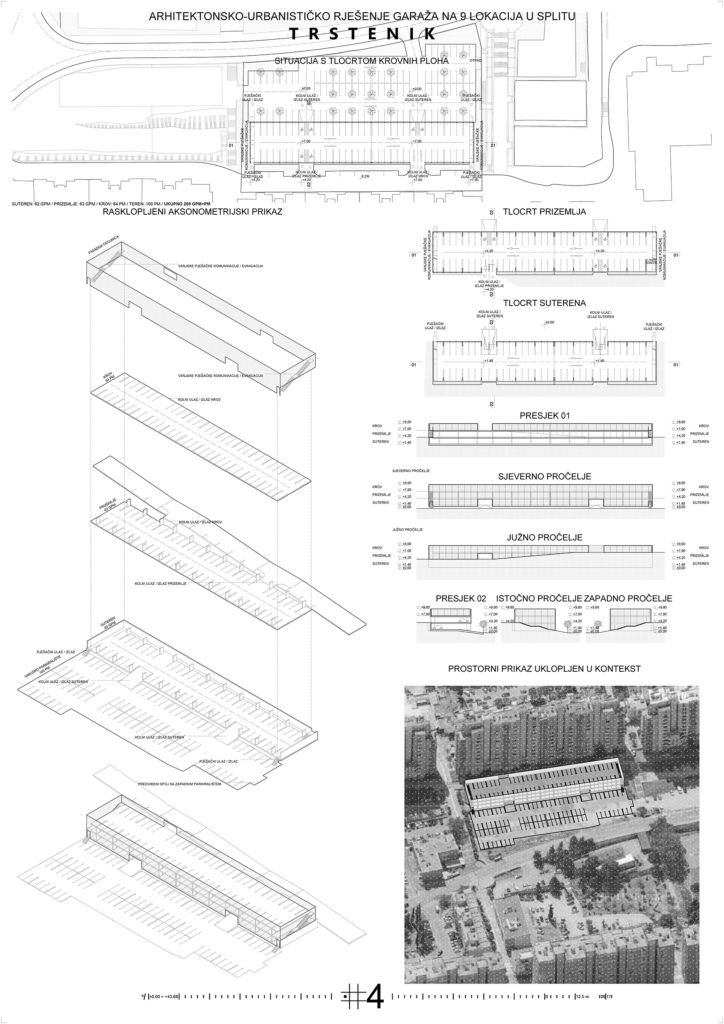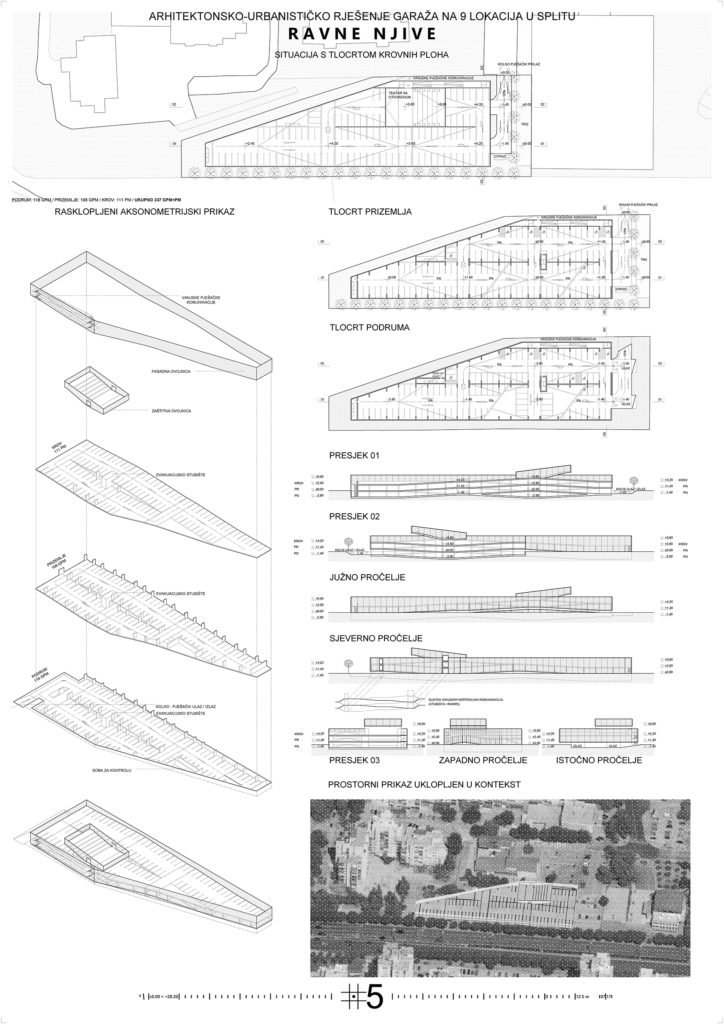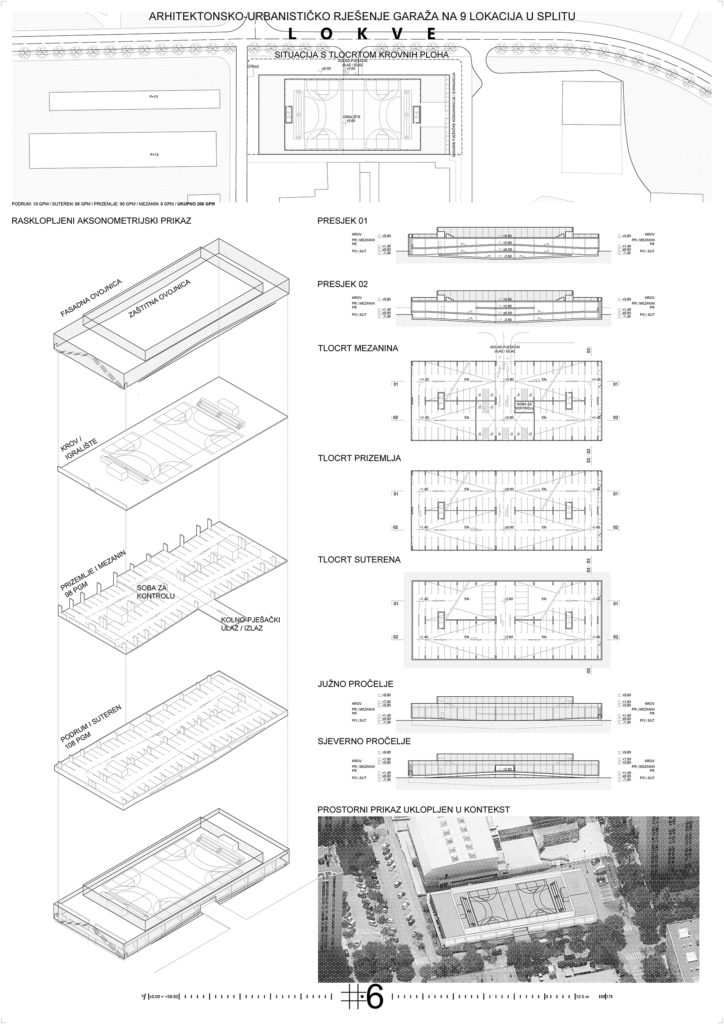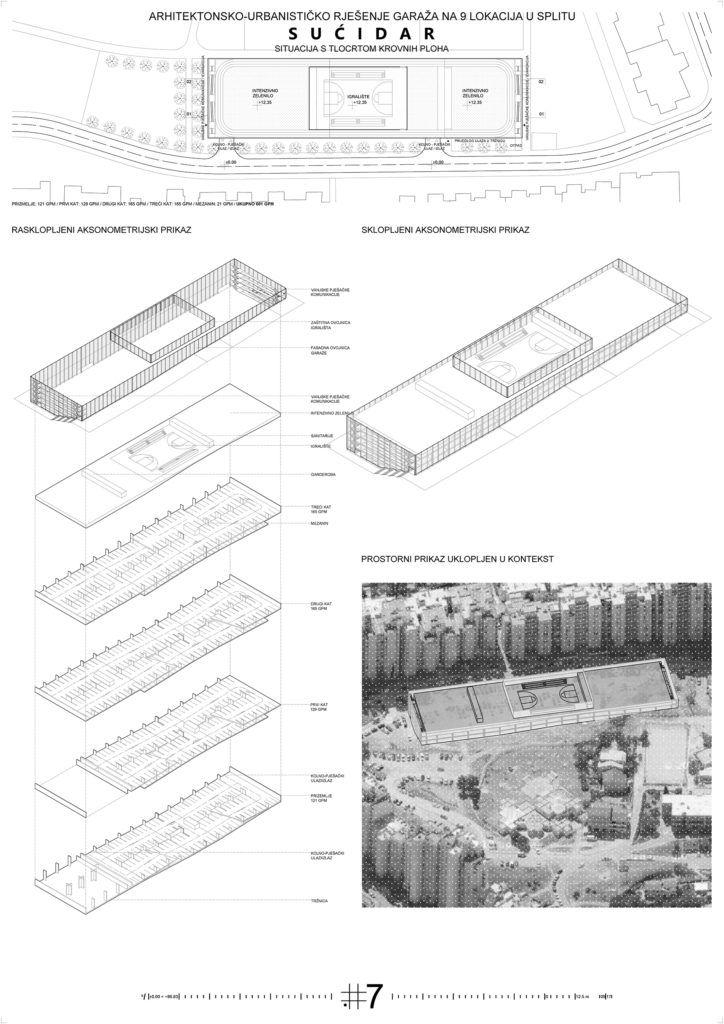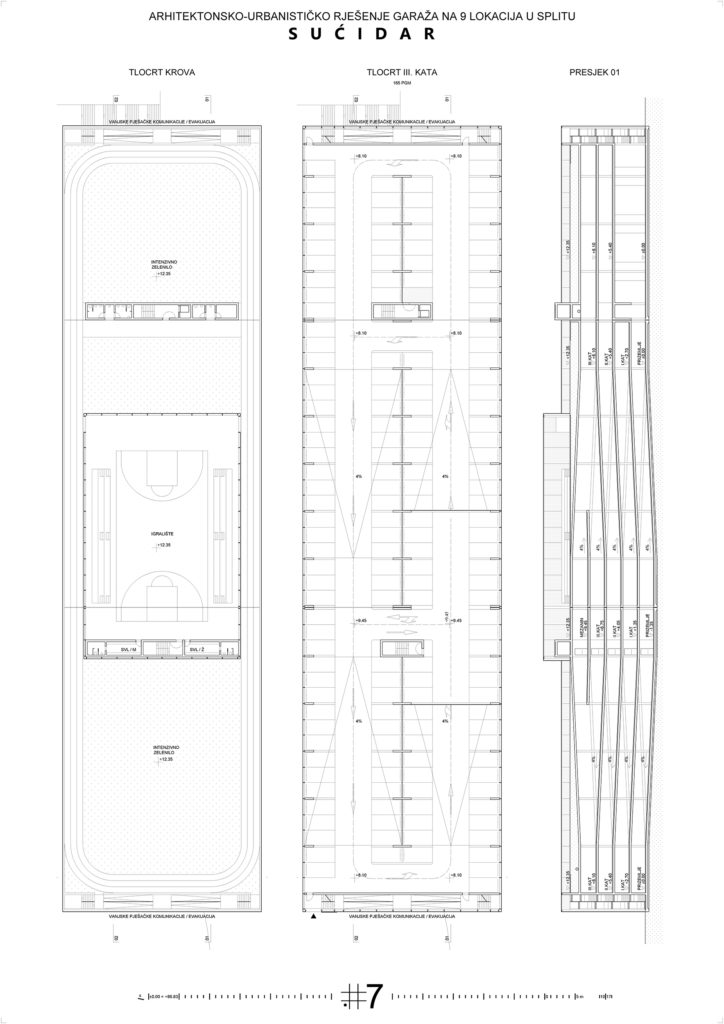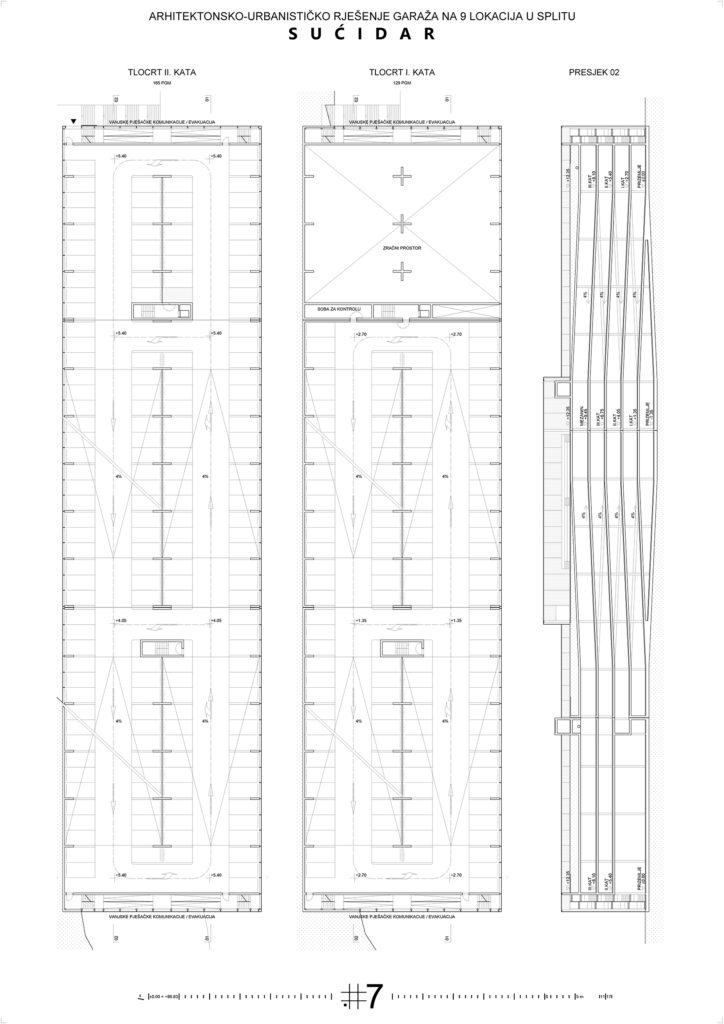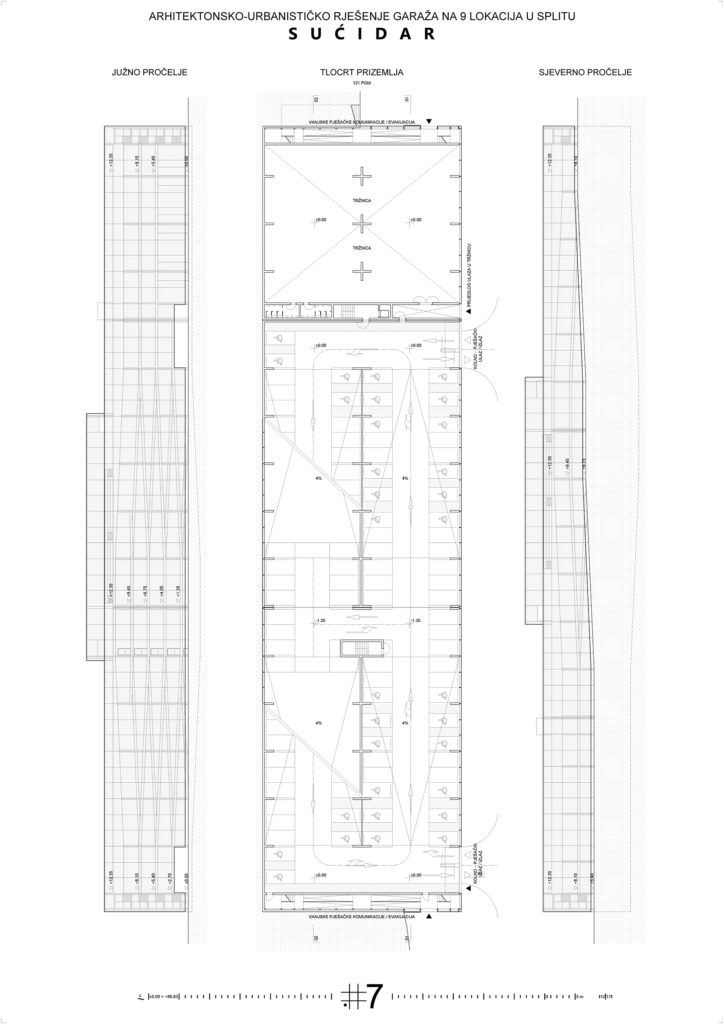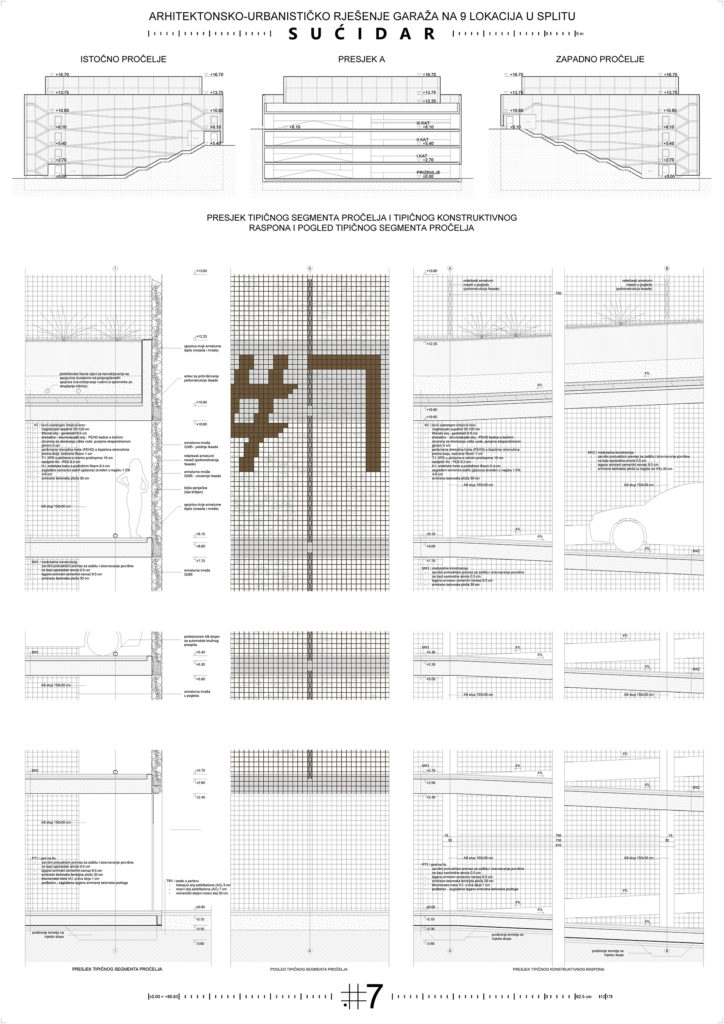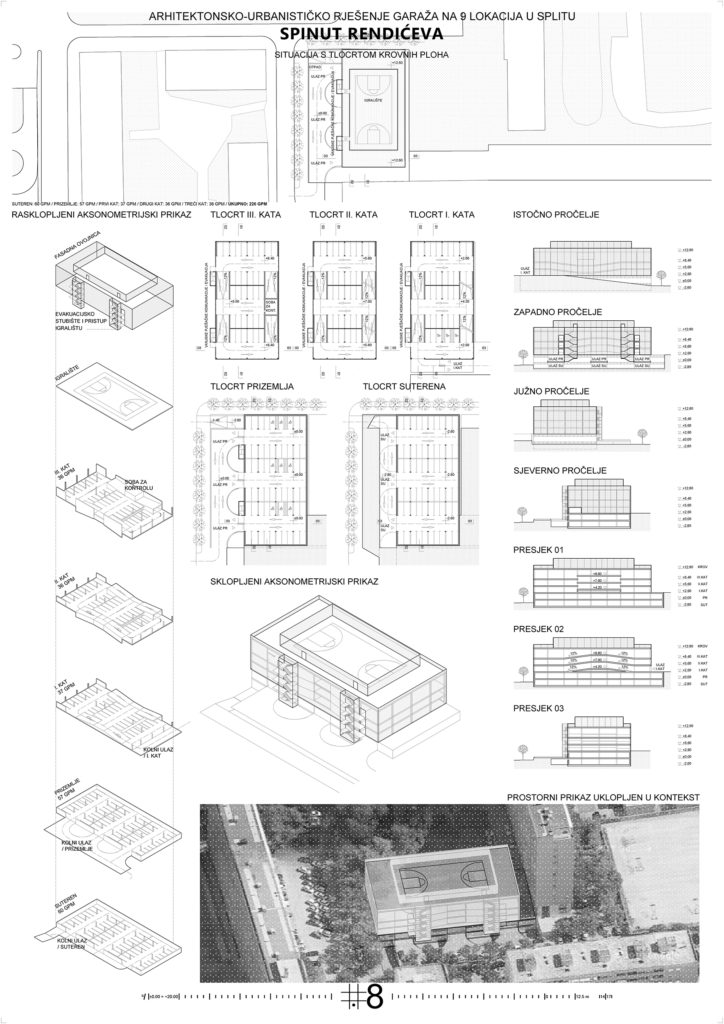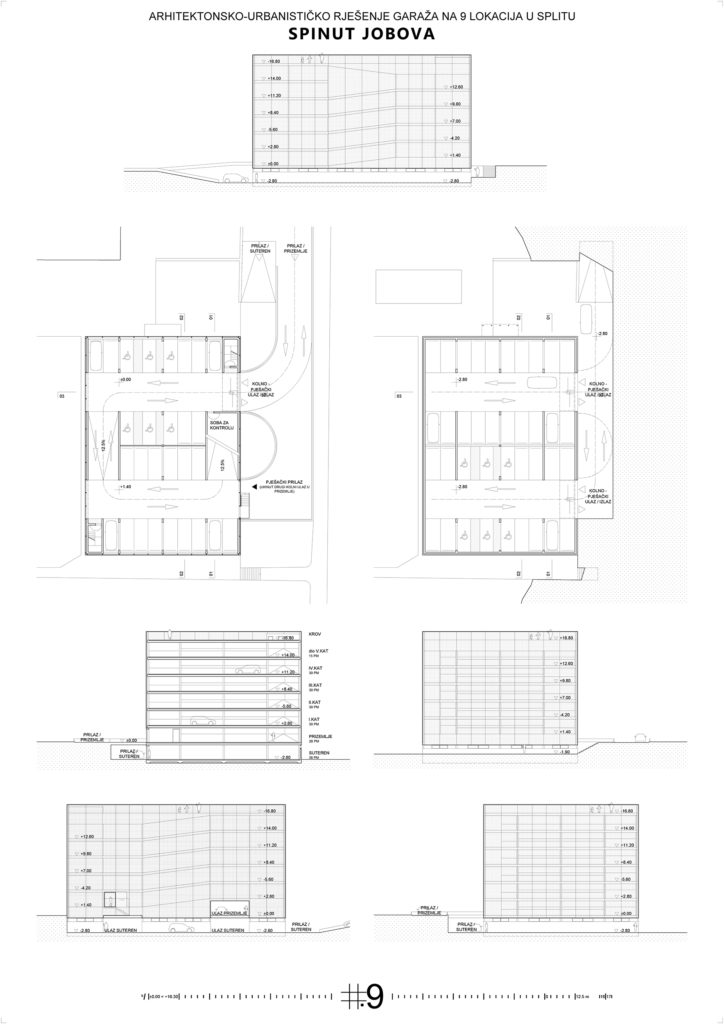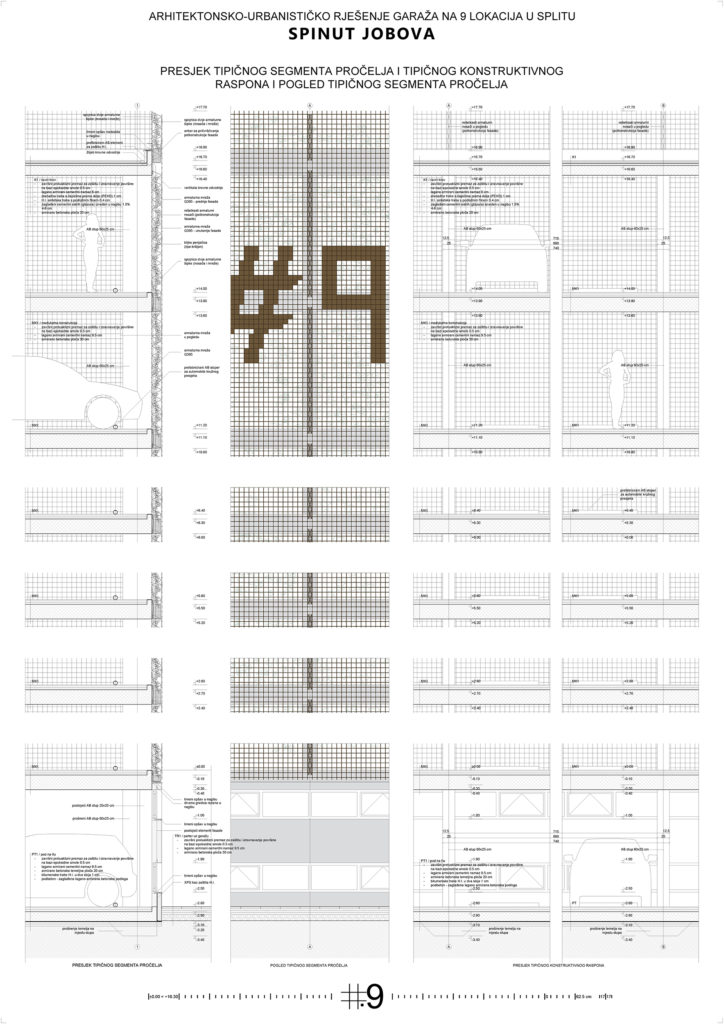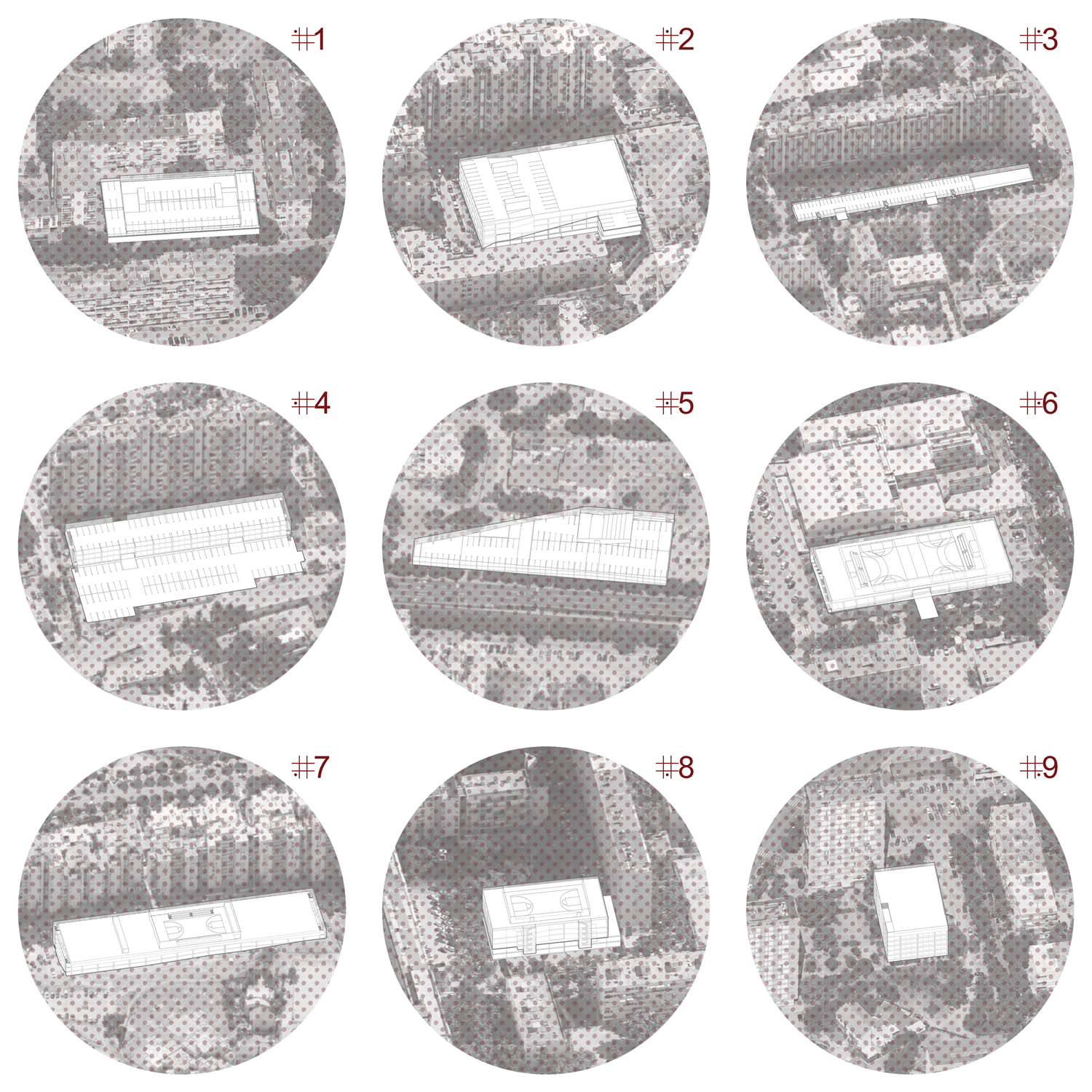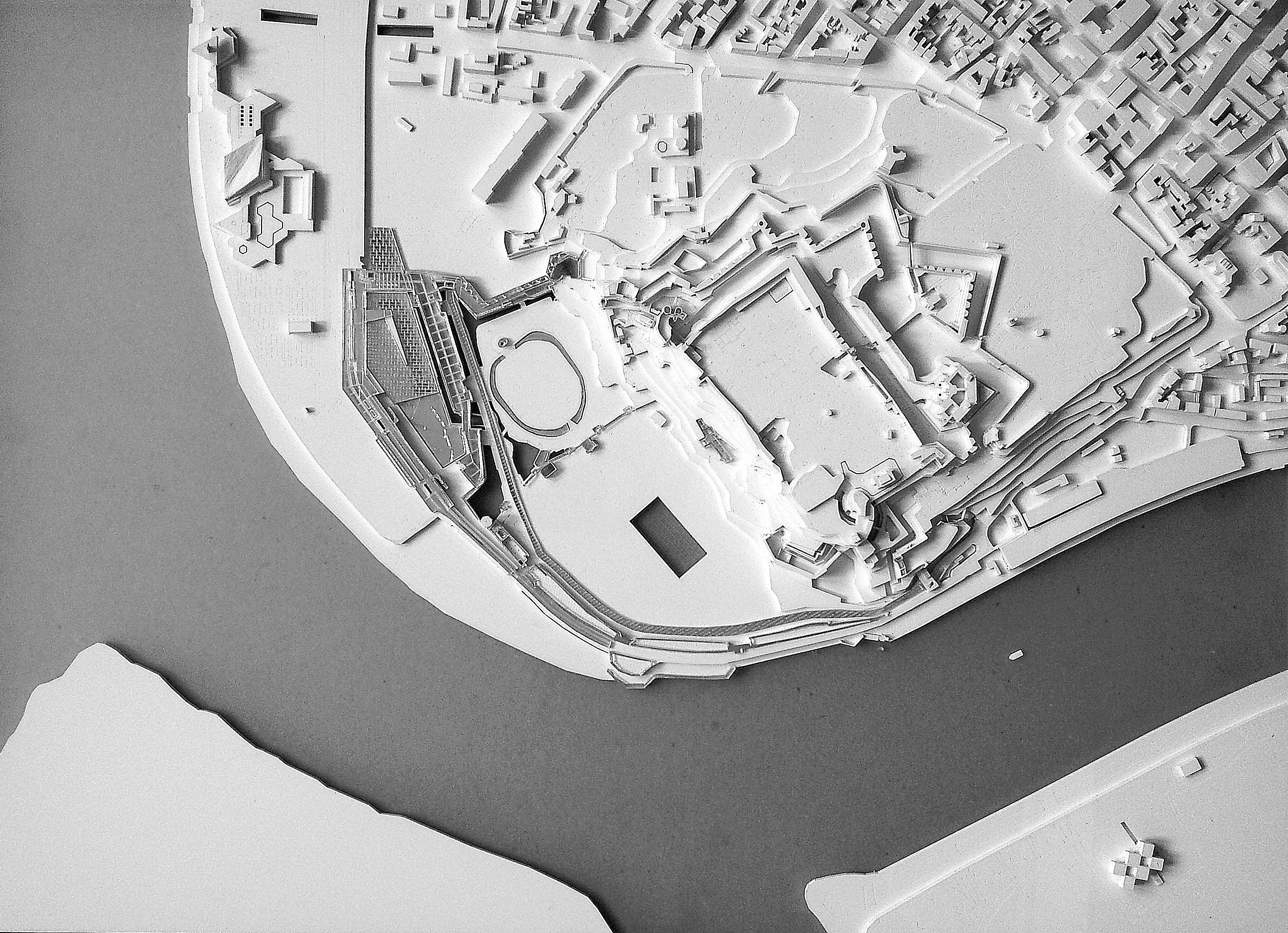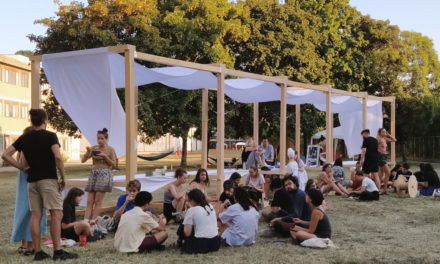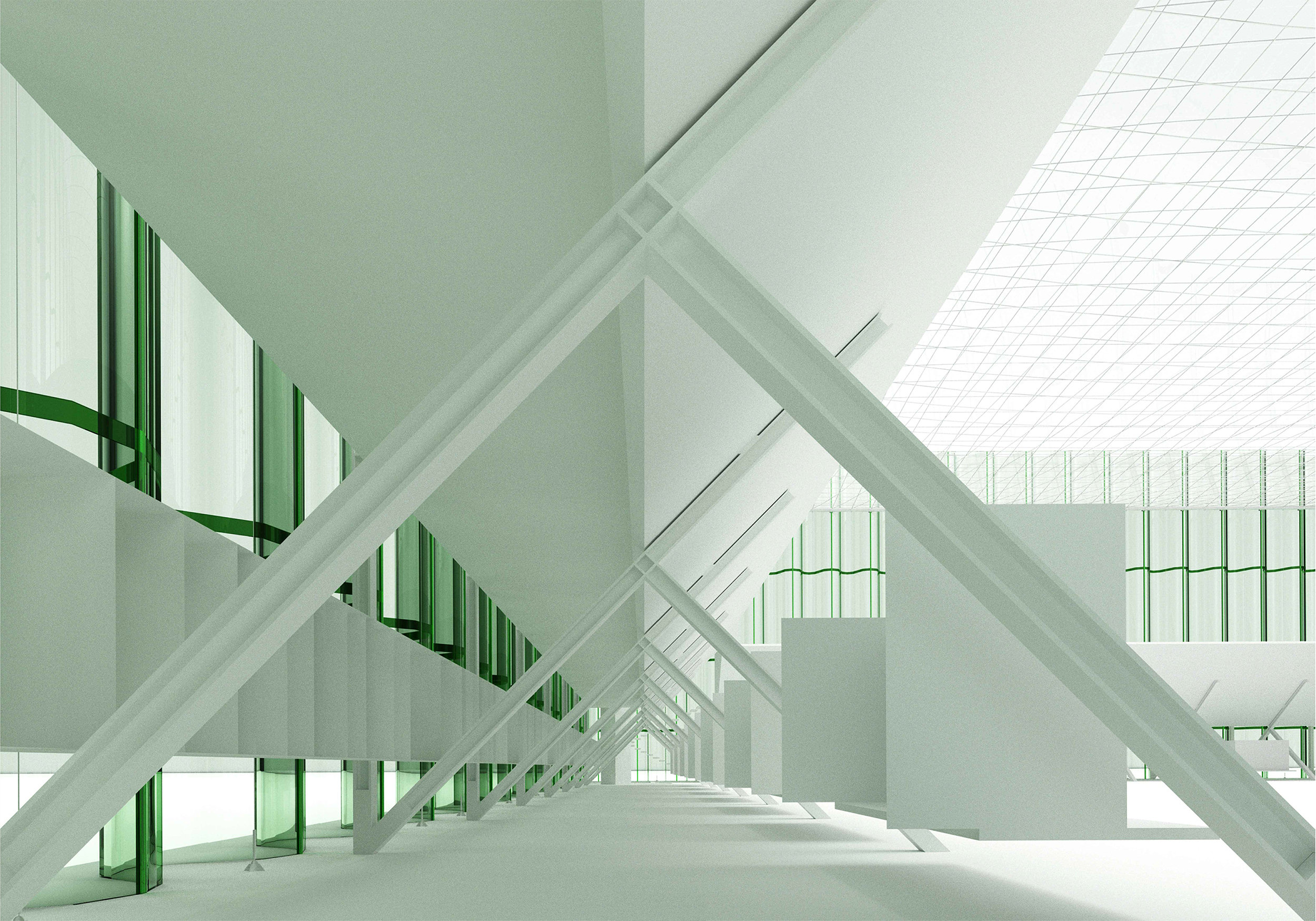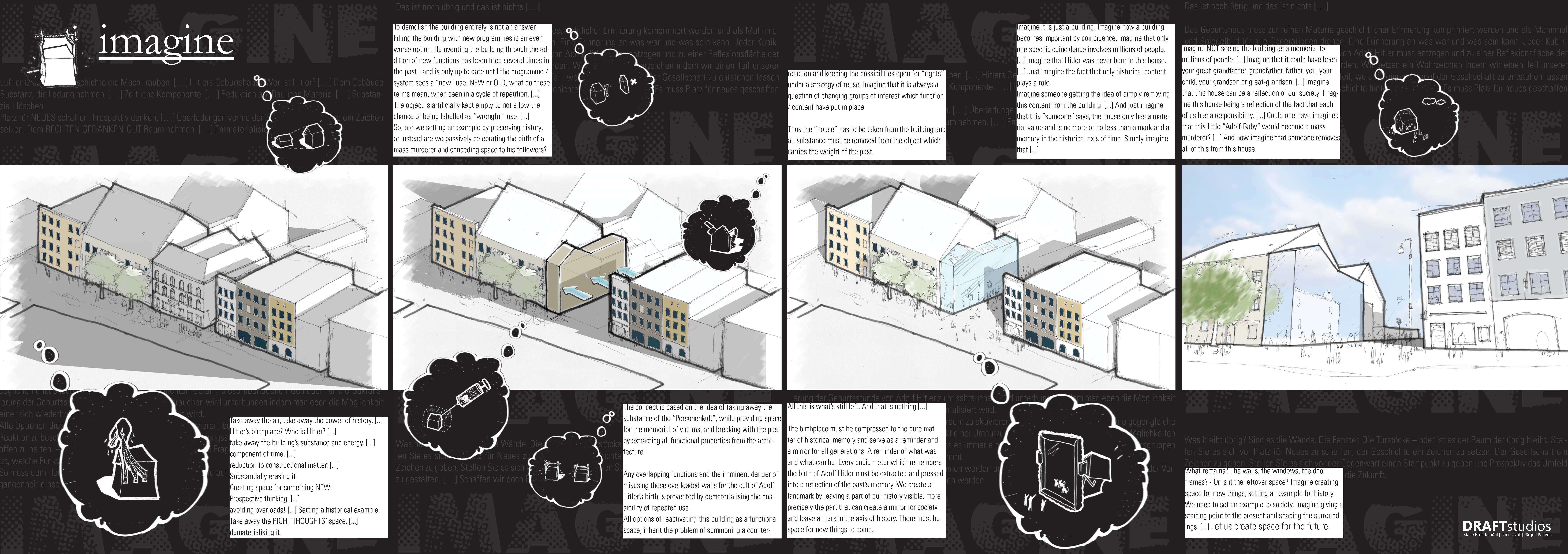May of this year saw the conclusion of an open competition, led by the Split Architect’s Association (Društvo arhitekata Split – DAS), calling for architectural-urban solutions for garage buildings at nine locations in Split, Croatia. The brief included both upgrading existing and designing new garage buildings, with the overall aim of producing an all-encompassing solution for all nine locations. The competition is but a step towards dealing with idle traffic and parking, an issue that has suffered neglect from the City for too many years.
Read below about the first-prize awarded submission in the words of the authors themselves. The overall competition results can be found here.
authors: Grgur Butigan, Jakov Matas, Bernardica Grubišić i Katarina Kazić
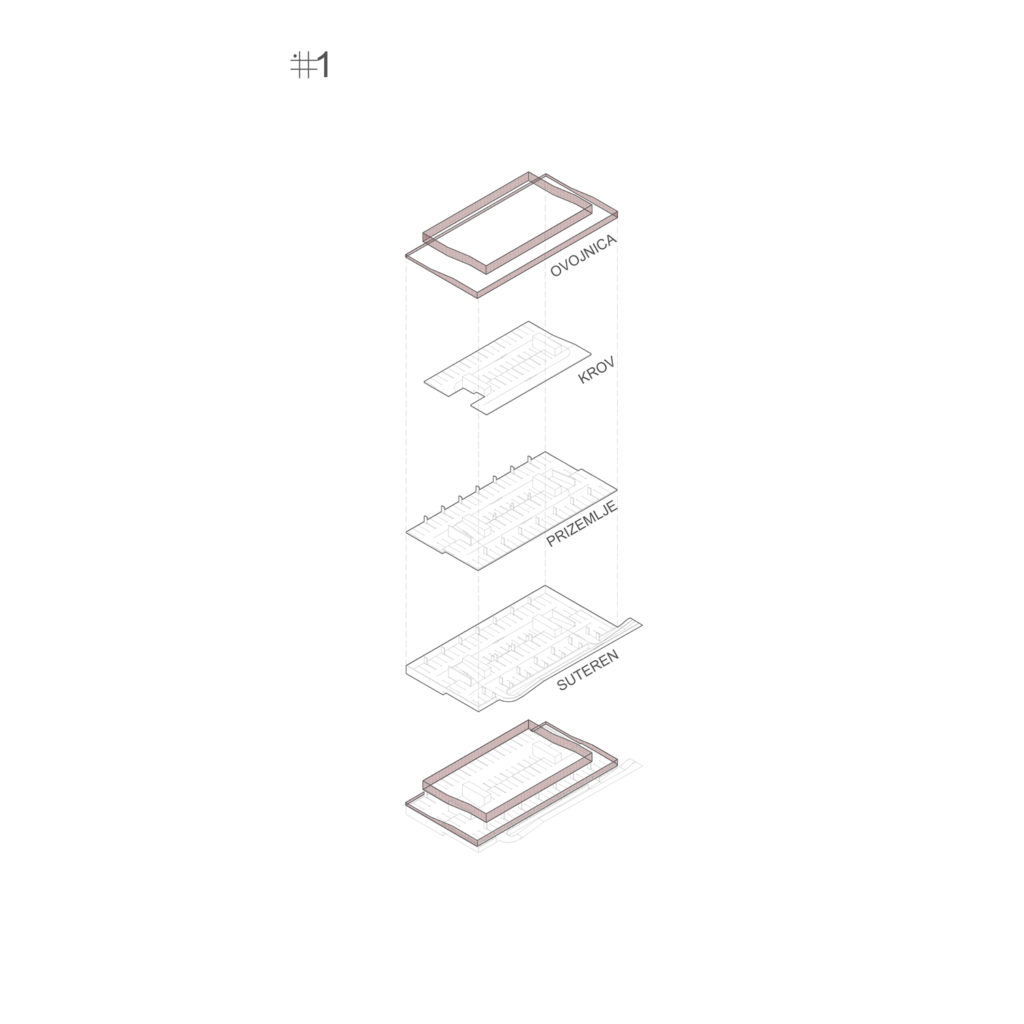

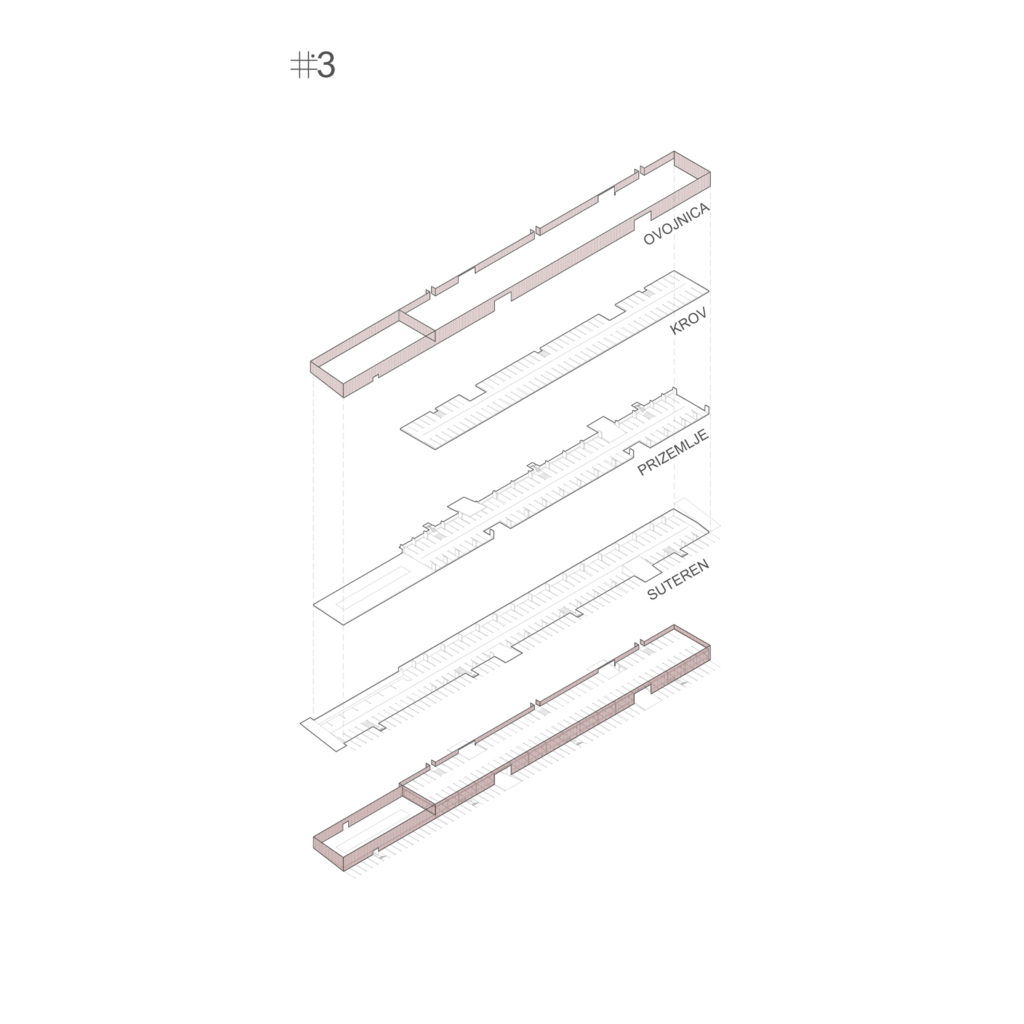
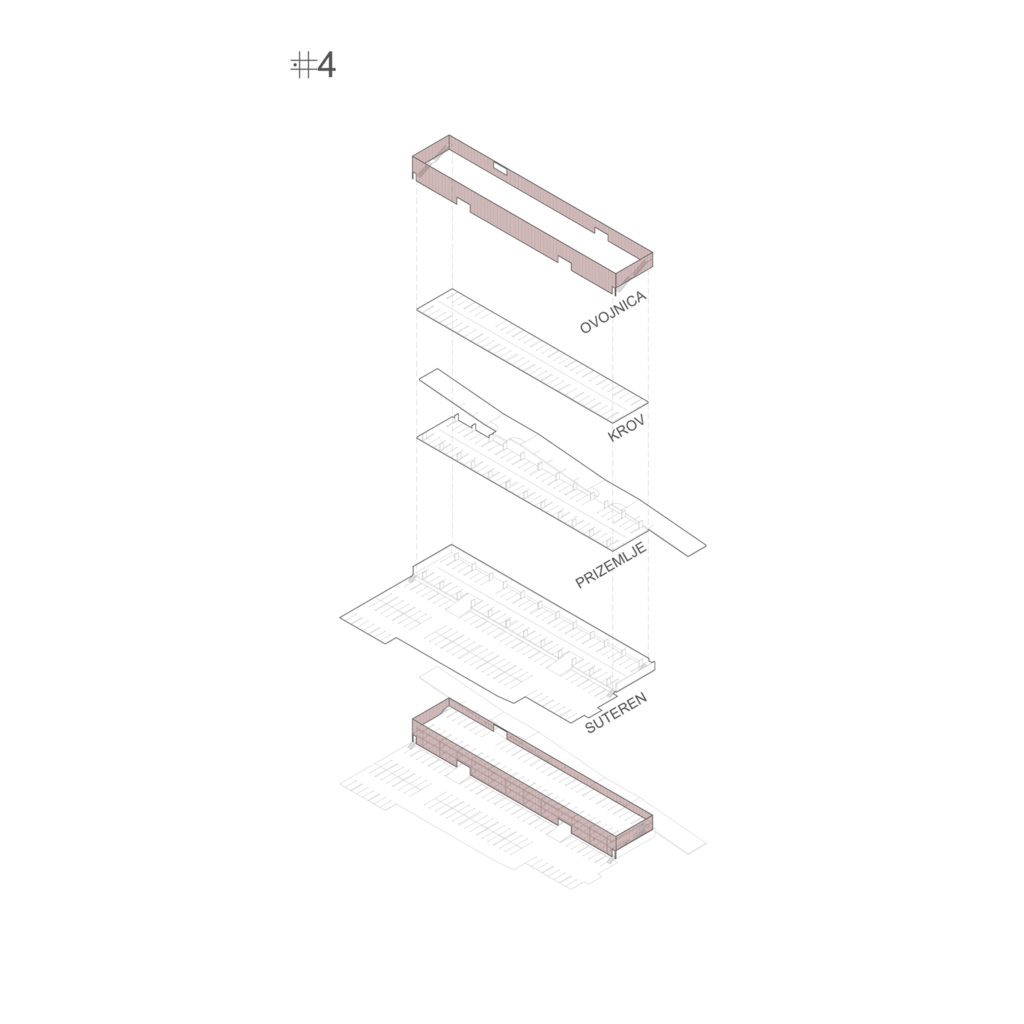
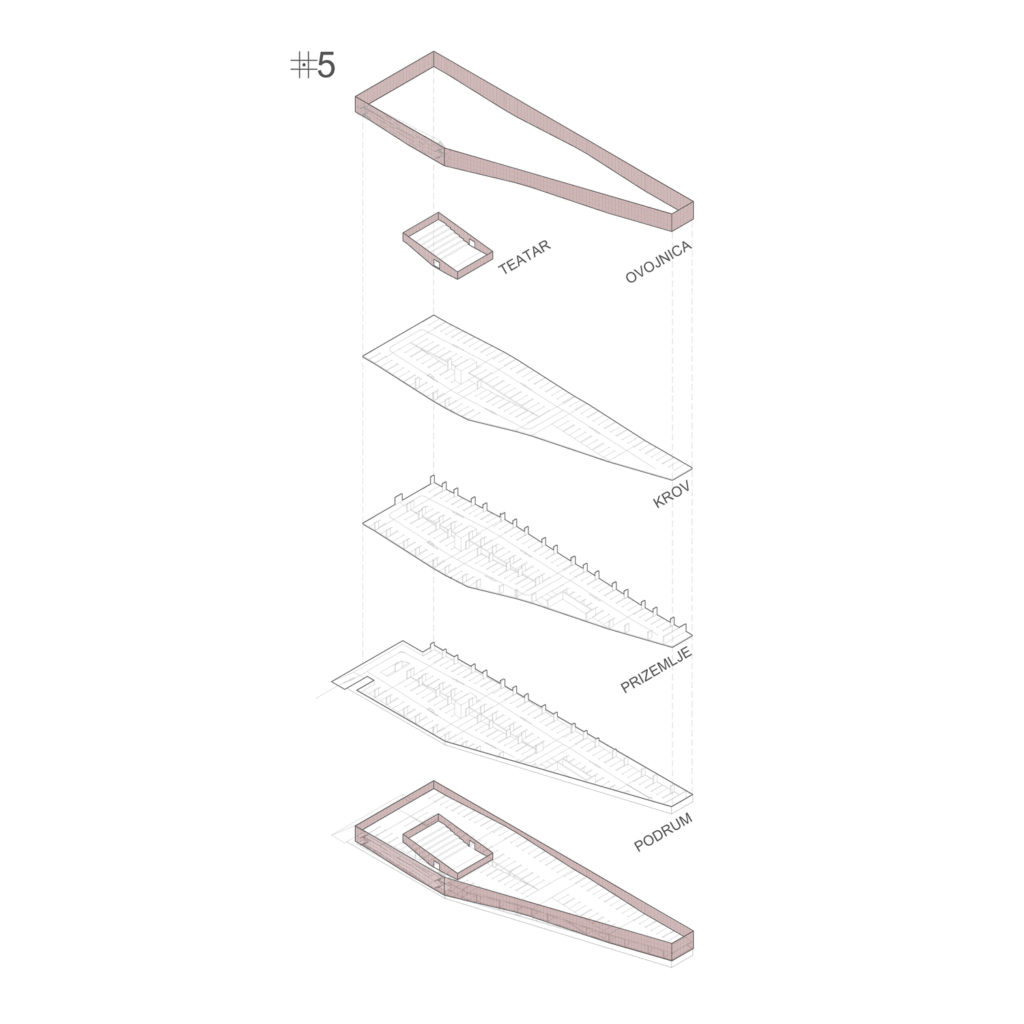

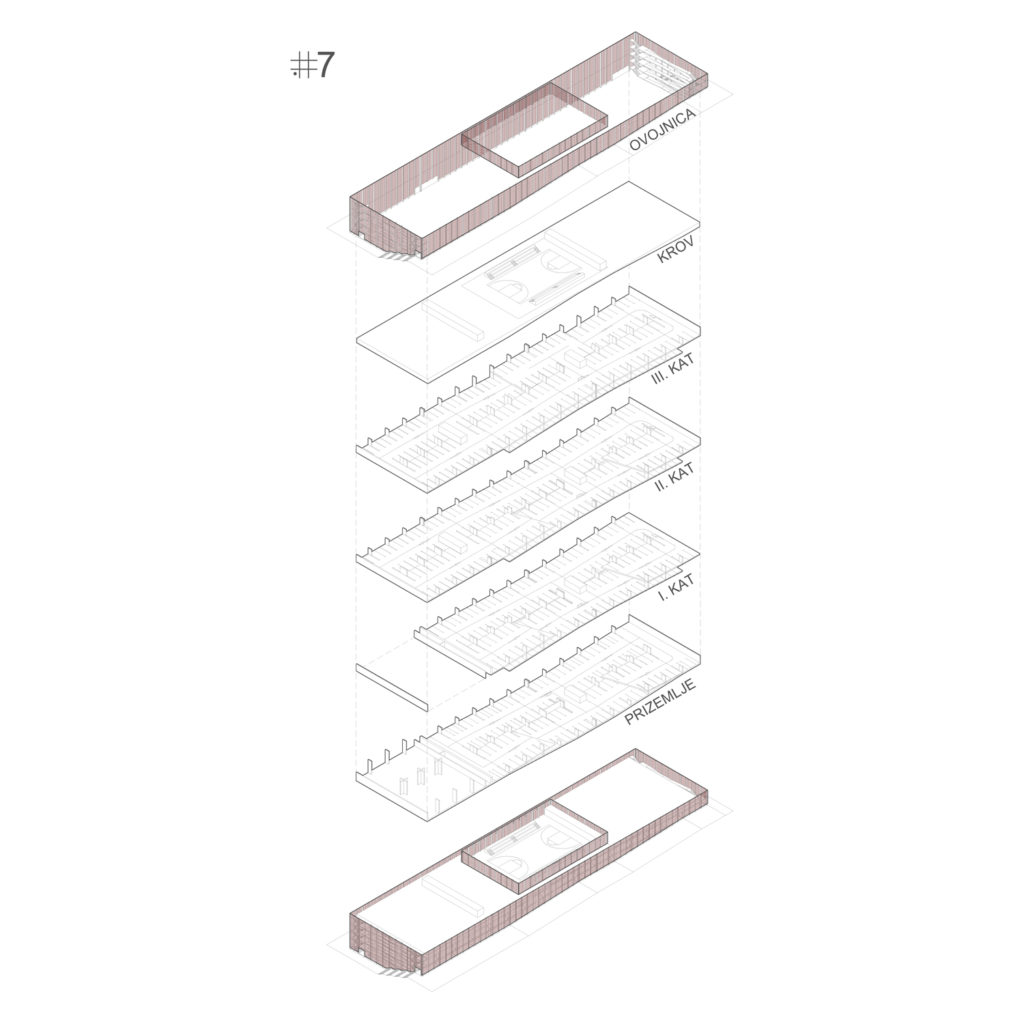
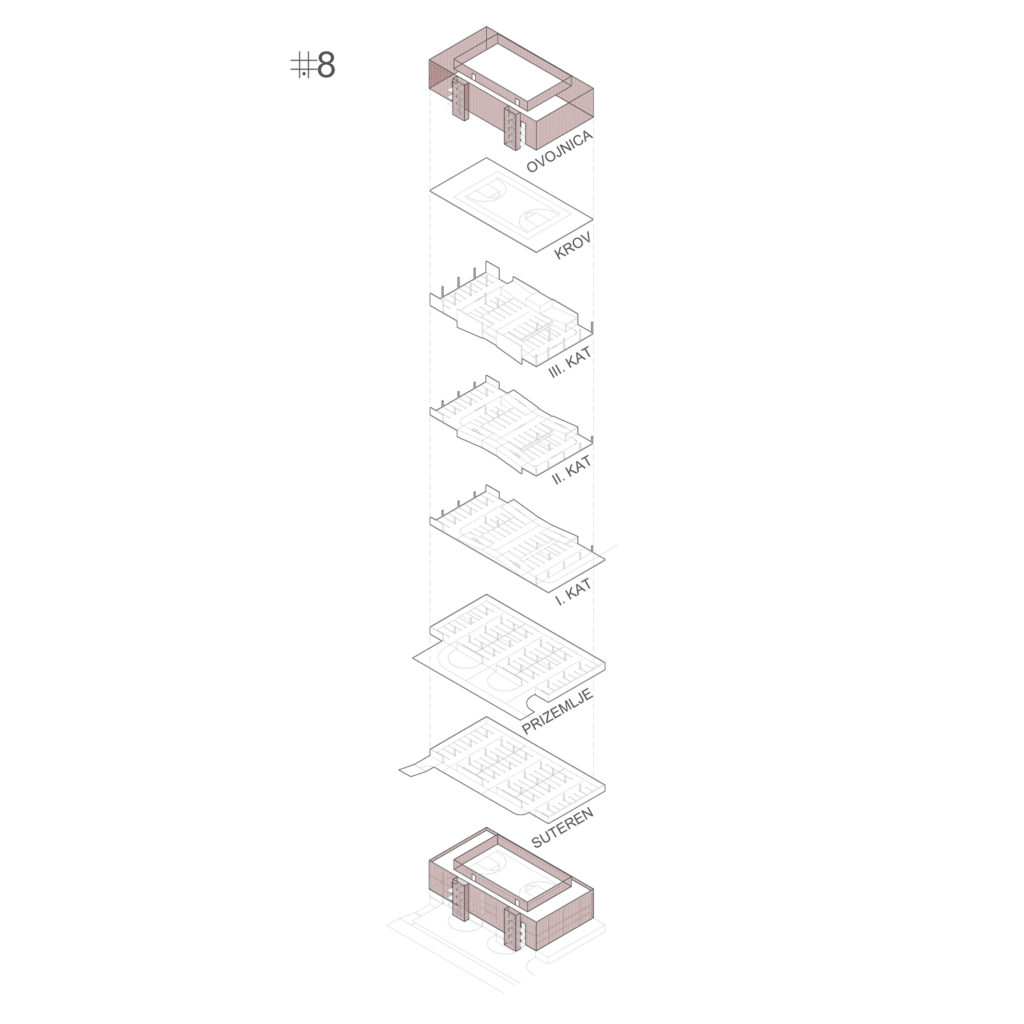
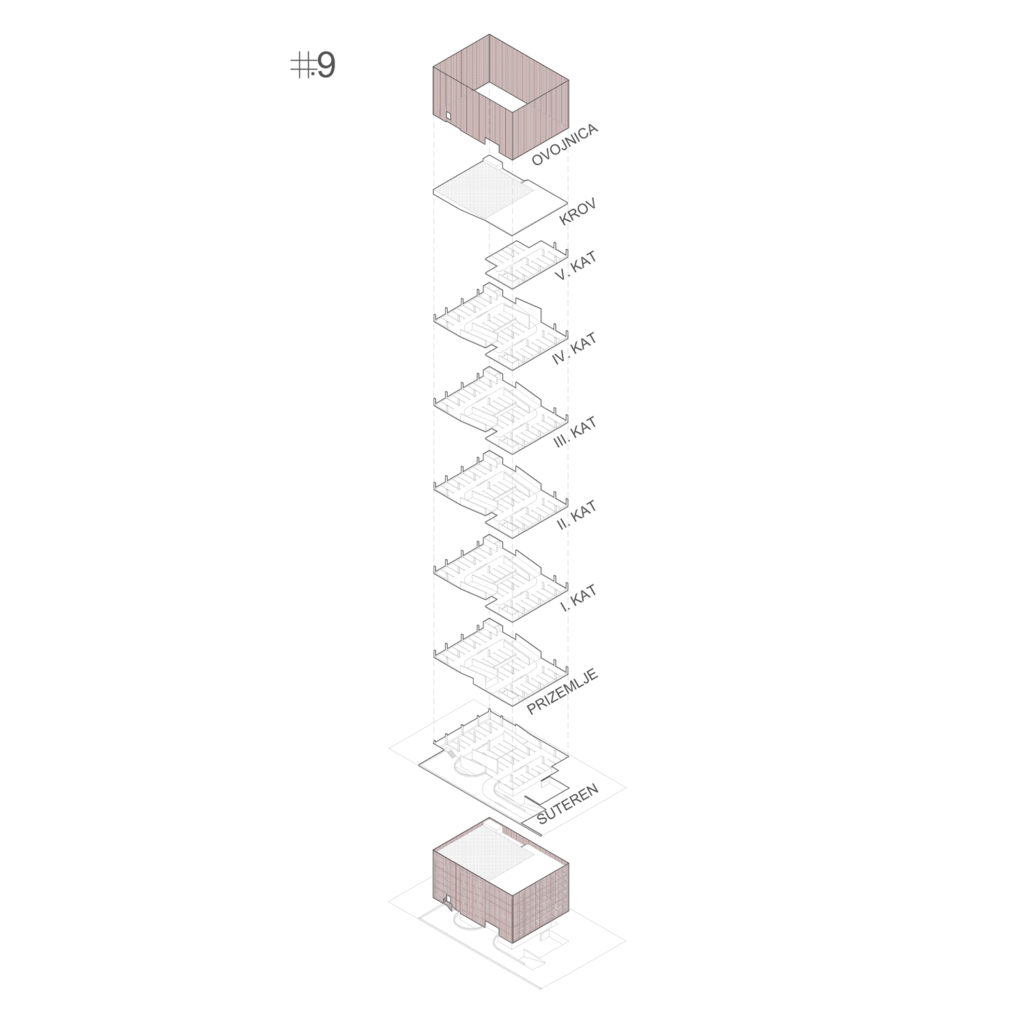
Architectural-urban design concept
City of Split and its current form is based on an overlay of a series of quite contrary tendencies. This overlap creates a collage city inside which constructions spontaneous and planned, consolidated and unconsolidated, public and private are intertwined. Among aforementioned elements there are no discernible borders nor clear endings. Totality of this contradictions culminates with a city which balances between order and chaos, the outcome of which is its incomplete appearance. Bare concrete of a metabolic architectural legacy flirts with unfinished facades of wild construction, visible reinforced concrete tie columns and armature bars. A consequence of this dissonance surely is a society which, in contrast to earlier generations, doesn’t relate to its own space-time continuum. Current modernity and its society which observes the world around itself exclusively through the present, with heterogeneous and incoherent structures as a direct consequence, is in an absolute imbalance with the environment.
Developmental framework of this project consequently becomes a contemplation of architecture and while it originates in a certain section of space and time, it doesn’t present merely an answer to its momentary context, but by adhering to lessons from the past it creates a spatial outline for the future. This outline, comprised of aforesaid contradictions, is attempting to deprive itself from these contradictions by directly opposing them. Unfinished outer appearance woven of rebar nets on the one side and a clear principle of generating an inner structure on the other side, take on the role of a conciliatory factor between two feuding cities. This novel structure simultaneously accepts certain features of both phenomena, yet it drifts apart from them, equally shying from the idea of finality and projecting the future, as well as shying from the reckless and chaotic.
This method of deliberating architecture and its implementation in an urban context is closest to the study “Made in Tokyo” by the Japanese architectural collective Bow Wow in which mapped buildings are ennobled through time with functions contrasting the original. Thus, buildings in the function of public utility services are being complemented by or wholly converted to recreational, residential, business and other contents. Foregoing phenomenon is comparable with the development of the Palace of the Roman Emperor Diocletian which was throughout the time gradually converted to a city. Acknowledging change as the only constant, the evolutionary potential of every building, especially those that are public and city defining, becomes even more so crucial.
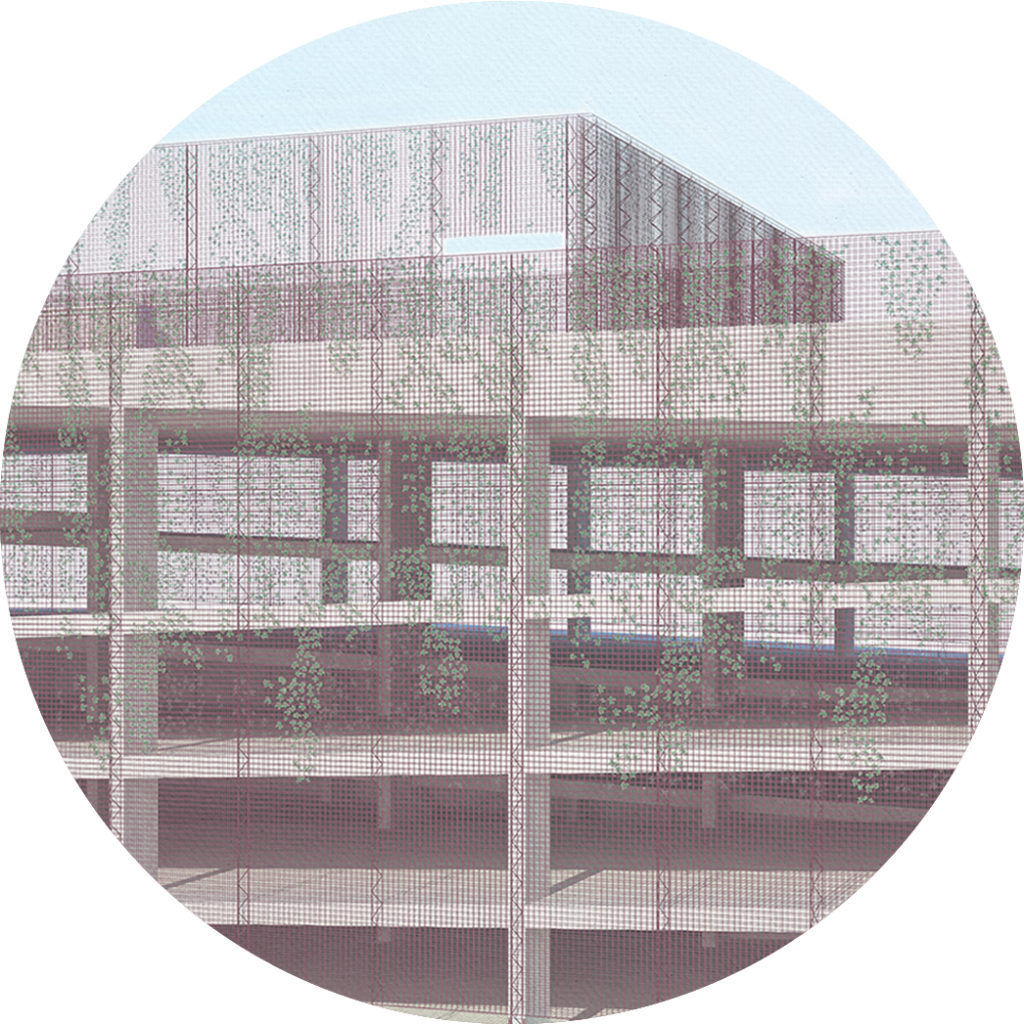
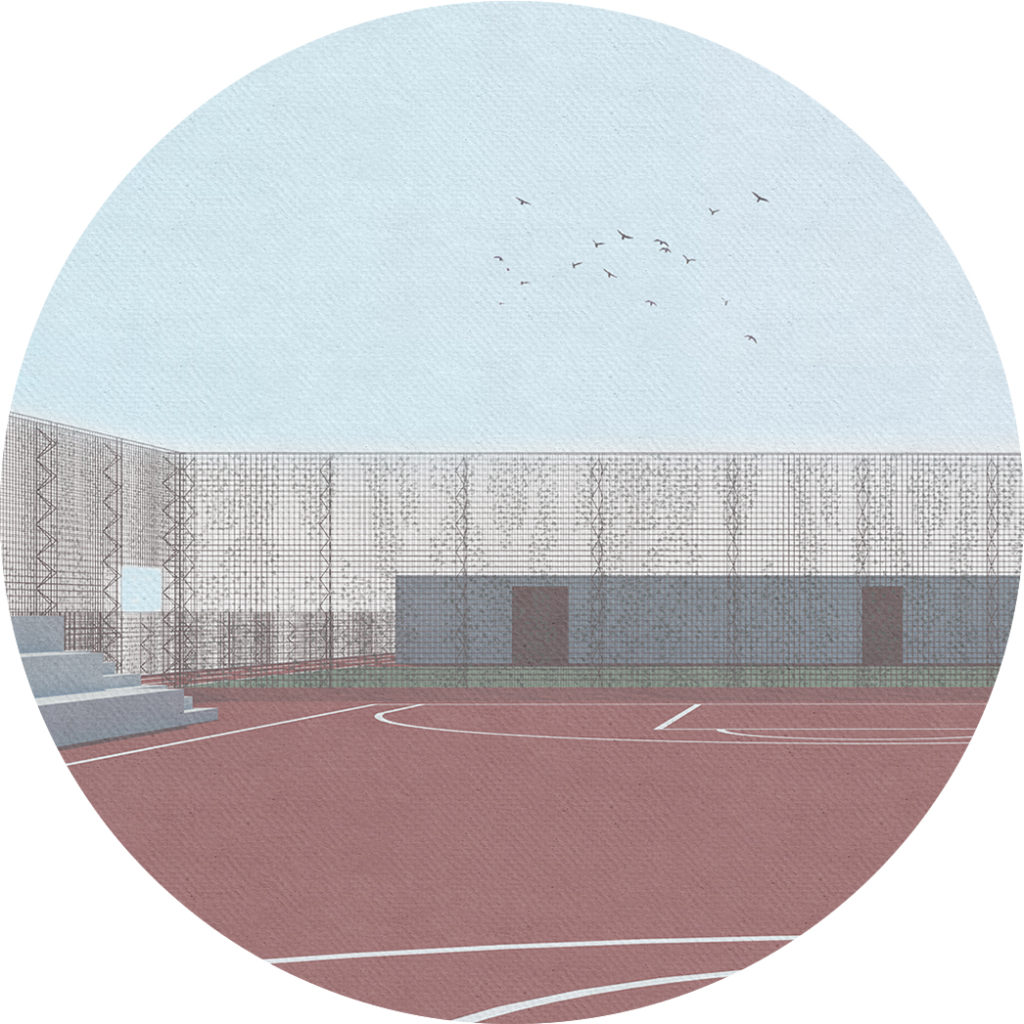
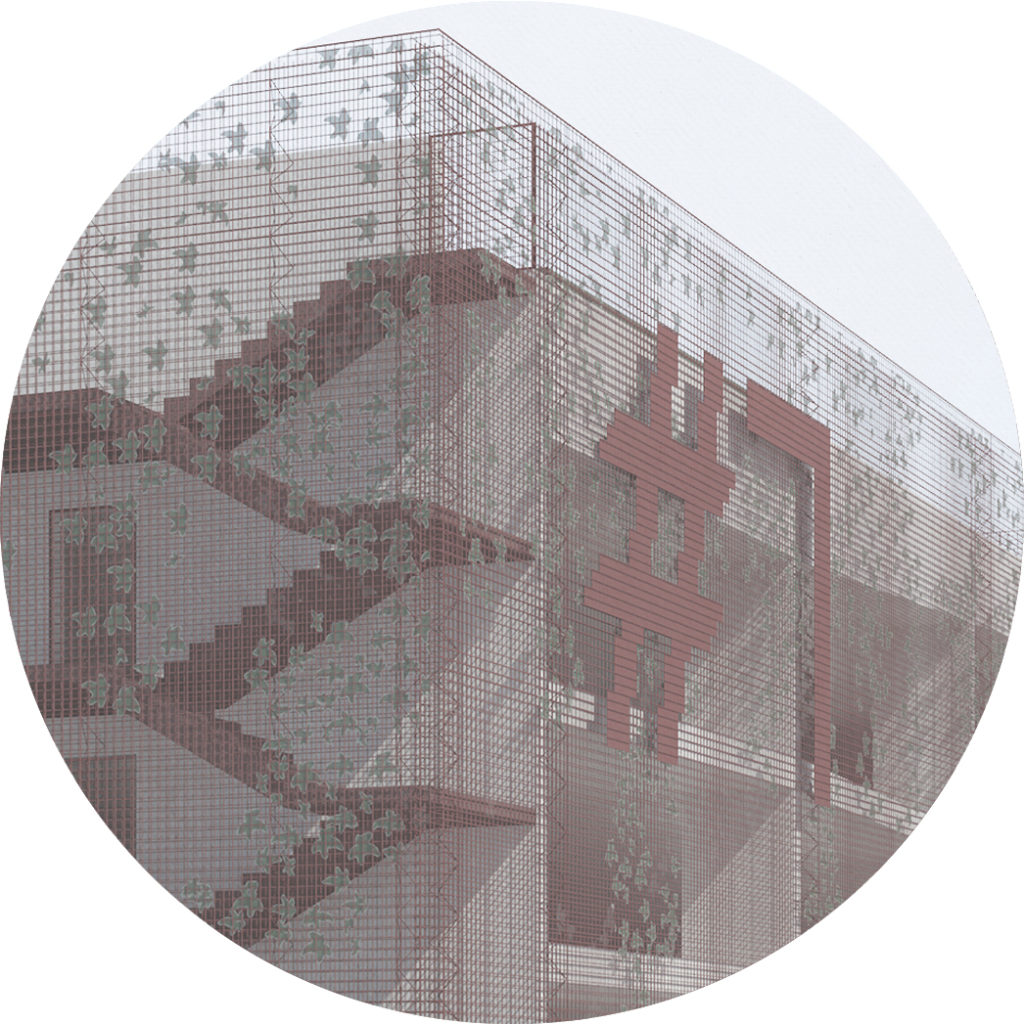
Materials and configuration
The outer membrane of the garage is made of a system of rebar meshes Q385 set in two layers between the substructure – vertical supports with the width of 20 centimetres. The substructure consists of vertical rebar supports at a distance of approx. 250 centimetres that are held by an anchor to a reinforced concrete inter-floor construction. Added steel elements (supports and mesh) were oxidised beforehand to accomplish a specific rusty patina, after which they were protected by a colourless anticorrosive and fire-resistant layer.
Tubs for climbing plants (e.g. ivy) are added between rebar cages in the zone of the inter-floor construction to which they are anchored. Thus, plants are allowed a free vertical growth on the reinforcing mesh.
Transparent mesh is a safety barrier for pedestrians on semi-floors, a fence on the roof and an anti-theft system on the ground floor. Simultaneously it allows unhampered natural ventilation of car exhaust gases. All the while it is a sort of low cost, low tech, readymade application with a distinctively stark visual character which flirts with the previously described theme of incompleteness. While the meshes represent a pedestrian barrier, vehicular one is made of prefabricated reinforced concrete car stops, with a circular cross section, that are set on every parking spot above ground.
Outer reinforced concrete construction and ceiling soffits are implemented in visible concrete, while the floor surface of the inter-floor construction is coated with an anti-slip layer based on epoxy resin (application of signalling graphics on the garage floor). Specific visual identity is achieved by welding metal plates between reinforcing meshes (filling meshes with “pixels”) allowing the application of necessary graphics and signalisation. The detail drawing displays the principle of graphic marking through a numbered sign of an ordinal garage number.
Roof surface is shaped in accordance with the content prescribed in the competition programme. The content varies from combinations of paving, smoothened flat surfaces, tartan for sports and recreation, extensive green roof for low vegetation and an intensive green roof for shrubbery and trees. By annulling the semi-floor system on the roof floor, a tub is created with the depth of soil and hummus sufficient for root growth and placement of a system of pipes and rain collectors for the irrigation of park surfaces and climbing plants on the membrane. Previously described sustainable concept can be supplemented with the addition of solar panels, mini wind turbines and other optional elements through which the theme of incompleteness wouldn’t be disrupted, on the contrary – it would be complemented.
Therein comes the intention that the architectural construct of future garages is made of “almost nothing”, that it is made of an elementary construction and a reticulate, low-cost, low-tech and readymade membrane, respectively. As such it is unobtrusive and almost invisible, leaving the possibility of supplementing the structure with a future, unforeseen function. The structure consists of a system of long and short semi-floors and a continuous ramp under an exceedingly mild incline through which the existence of a clear floor is almost entirely negated. By using such a system, the usually intrusive and rigid structure is dematerialised. Via constant cross section change and plan overlapping in the exterior and interior a phenomenological transparency is accomplished which becomes even more pronounced by using a porous and vibrant envelope. The boundary of generating such a structure remains undefined and prone to change and upgrade, depending on necessary capacities. Thereby the themes of incompleteness and change, major characteristics of the Split urbanistic phenomenon, are additionally evident and confirmed, while the building as such is integrated in its immediate context.
